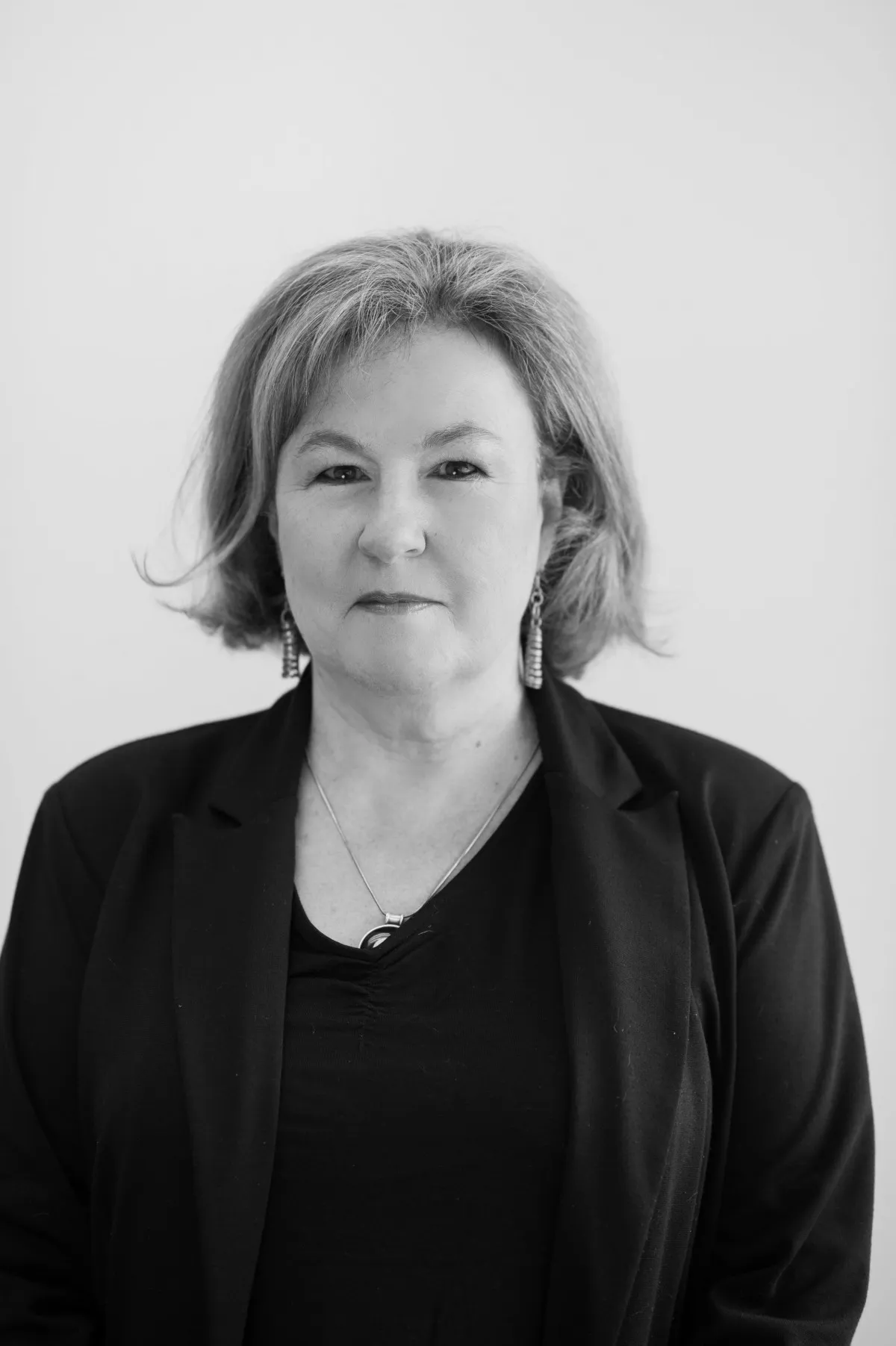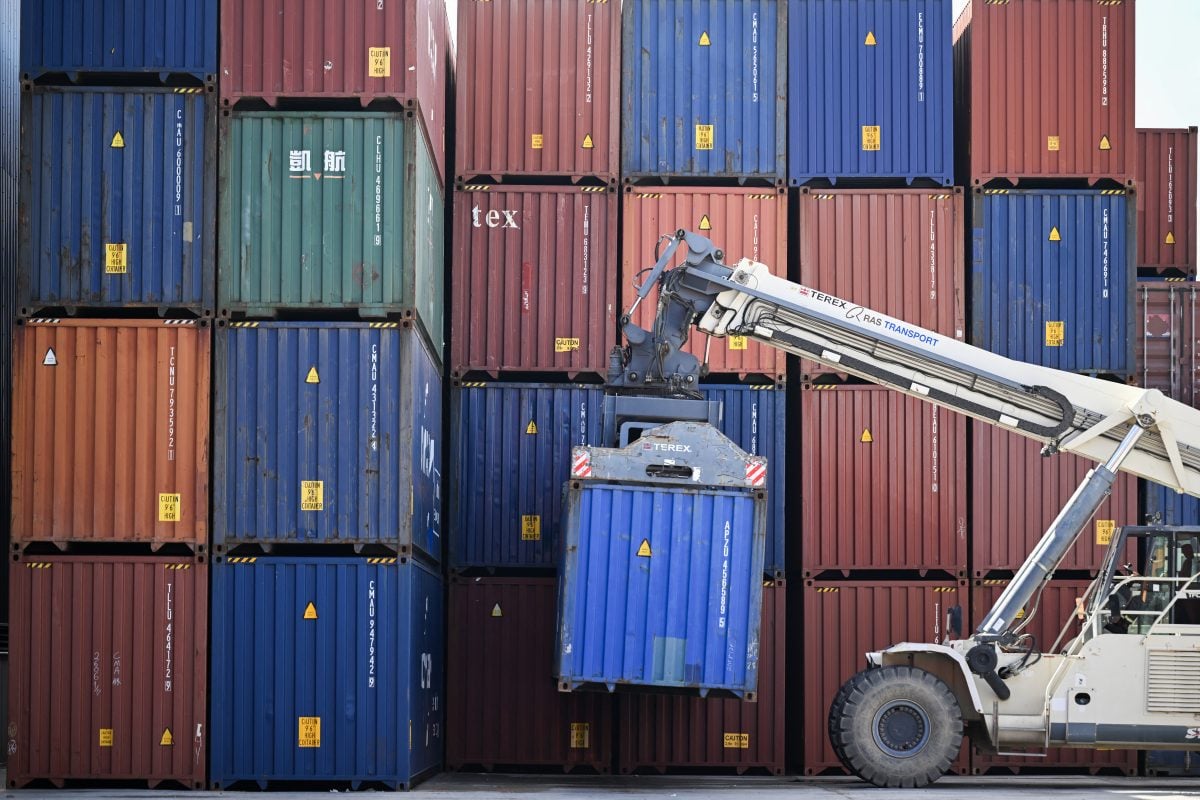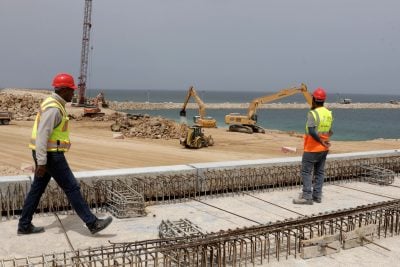The Port of Maputo is bidding to establish itself as a leading logistics and transshipment hub on Africa’s east coast via an expansion plan and schemes for industrial development and value addition around the facility.
Sumeet Bhardwaj, CEO and managing director of Dubai-based port operator DP World in Mozambique’s capital, said infrastructure upgrades that will enable larger vessels to dock will catalyse regional trade by unlocking more competitive freight rates and increasing throughput. This dovetails with the Mozambique government’s own development vision to boost competitiveness by increasing the efficiency and value addition of its trade corridors with landlocked countries.
The company is engaging the government to set up special economic zones around the port to leverage its experience with similar facilities in Dubai, such as the Jebel Ali Free Zone. This was created in 1985 to service the nearby port, and is now one of the largest free zones in the world with more than 11,000 companies operating there.
But he emphasises that the port expansion is just one cog in the bigger machine of trade. Also needed are improvements to operational and supporting infrastructure to realise the growth ambitions for the port.
DP World, in partnership with the Maputo Port Development Company (MPDC), which also includes Mozambique’s ports and rail utility CFM, South African logistics company Grindrod, and local company Mozambique Gestores, are leading the transformation project.
Expansion project
In 2024, MPDC’s concession to operate the port was extended to 2058, contingent upon a $1.1bn investment by 2033, when the original concession is due to expire, to improve infrastructure and operational efficiency. The port is also expanding its car and coal handling capabilities to meet growing demand.
The first phase of the expansion began with a two-year, $165m project to increase annual container capacity from 255,000 to 530,000 TEUs. Key measures include deepening the berth from 12 to 16 meters and extending the quay length to accommodate post-Panamax vessels, a measure denoting larger ship sizes based on the Panama Canal.
These improvements intend to position Maputo as a transshipment hub, allowing for feeder services to local and regional ports and enabling load lightening for ships traveling to shallower ports.
This strategic positioning includes serving sub-Saharan Africa’s busiest port, Durban, which currently cannot accommodate fully laden post-Panamax vessels, says Bhardwaj. Feeder services from Maputo will also allow it to compete with established hubs such as Singapore for trade between Asia and Africa.
Trade corridor development
DP World’s immediate focus is on streamlining logistics and strengthening trade corridors through multimodal transport. While both road and rail are vital, currently the rail service is underperforming, with most cargo – about 65% from South Africa – moving by road.
He says the port aims to complement, not compete with, Durban, which handles 3.6 million containers annually – much more than Maputo’s projected one million by 2058.
Nevertheless, Maputo’s efficiency and cost benefits attract South African companies. Over 95% of Maputo’s cargo throughput is transit goods to or from South Africa. Bulk mineral exports, especially coal, chrome, citrus, and agricultural goods, have driven a rise in overall volumes – from 22.2 million tonnes in 2021 to 31.2 million in 2023.
Improving rail capacity is central to further growth. South Africa’s transport utility, Transnet, recently awarded rail slots to 11 private companies in a bid to address years of under-investment and operational challenges.
“Both road and rail have an important role to play, but the reality today is that rail is underperforming. At present, we are managing only about one train a week from the border, and there is no active service from Johannesburg, Pretoria, and other inland hubs.”
“This transition from road to rail is essential. It reduces the carbon footprint, lowers costs, and improves efficiency. It also supports the kind of growth that we expect in the next five to 10 years.
“Without rail, growth will hit a ceiling; with it, we can build a hybrid model of road and rail that feeds cargo seamlessly across the corridor,” he says.
Zimbabwe is on the radar for growth, with plans to increase trade via the Rutenga rail link in southern Zimbabwe. The goal is to operate at least one dedicated cargo train daily, improving efficiency and reducing costs.
Currently, Zimbabwe relies primarily on the port of Beira, more than 1,000km forth of Maputo. It is also a key gateway to Southern Africa but handles much lower volumes of cargo and is constrained by its relatively shallow waters.
Cornelder, the port’s concessionaire, plans to invest about $12m to increase handling capacity. Although much smaller than Maputo, it has seen trade surge in the past two years.
Opportunities also exist for Maputo to expand the trade corridor with Swaziland, leveraging the arrival of larger vessels and falling logistics costs.
Value addition
DP World has bolstered Maputo’s appeal with a “dry port” at Komatipoort just inside South Africa, opened in 2019. This off-dock facility provides logistics and customs services.
The company’s experience with dry ports, such as the Kigali Logistics Platform in Rwanda connecting to Mombasa, Kenya, and Dar es Salaam, Tanzania, demonstrates the effectiveness of integrated logistics solutions for regional trade. The inland port has the capacity to handle 350,000 tonnes of cargo. “It is an ideal model for the AfCFTA,” says Bharwaj.
The firm is also collaborating with the Mozambique government to develop special economic zones and create industrial value around Maputo port. Mozambique’s main imports are finished goods and machinery, while exports are largely unprocessed commodities.
Another priority is establishing value-adding facilities – such as fertiliser plants, packaging, and processing operations – directly at the port.
Again, Rwanda provides a template for this.
“Our chairman partnered with the ministry of agriculture to transform the maize value chain. The result was that farmers reinvested their profits, production grew, quality improved, and exports took off. This is precisely the kind of supply chain cycle that is missing in Mozambique today.”
Risk management
A concern raised, Bharwaj says, is whether the AfCTA will really deliver on expectations. “My view is that the corridors will always remain. Trade will happen whether or not AfCFTA is fully effective. The hinterland must be fed, and that requires functioning ports and reliable inland logistics.
“The bigger risk, in my view, lies in how logistics are managed on the ground. Too often, systems are outdated – slow, expensive, and difficult to track. Customs procedures remain cumbersome. There is no single-window system here, no one-stop process to make trade seamless.”
“The government’s support at the top is strong, but it must also filter down to border authorities and customs agencies. Without innovation and new systems, the old ways will continue to frustrate investors.”
Want to continue reading? Subscribe today.
You've read all your free articles for this month! Subscribe now to enjoy full access to our content.
Digital Monthly
£8.00 / month
Receive full unlimited access to our articles, opinions, podcasts and more.
Digital Yearly
£70.00 / year
Our best value offer - save £26 and gain access to all of our digital content for an entire year!

 Sign in with Google
Sign in with Google 



